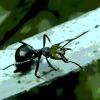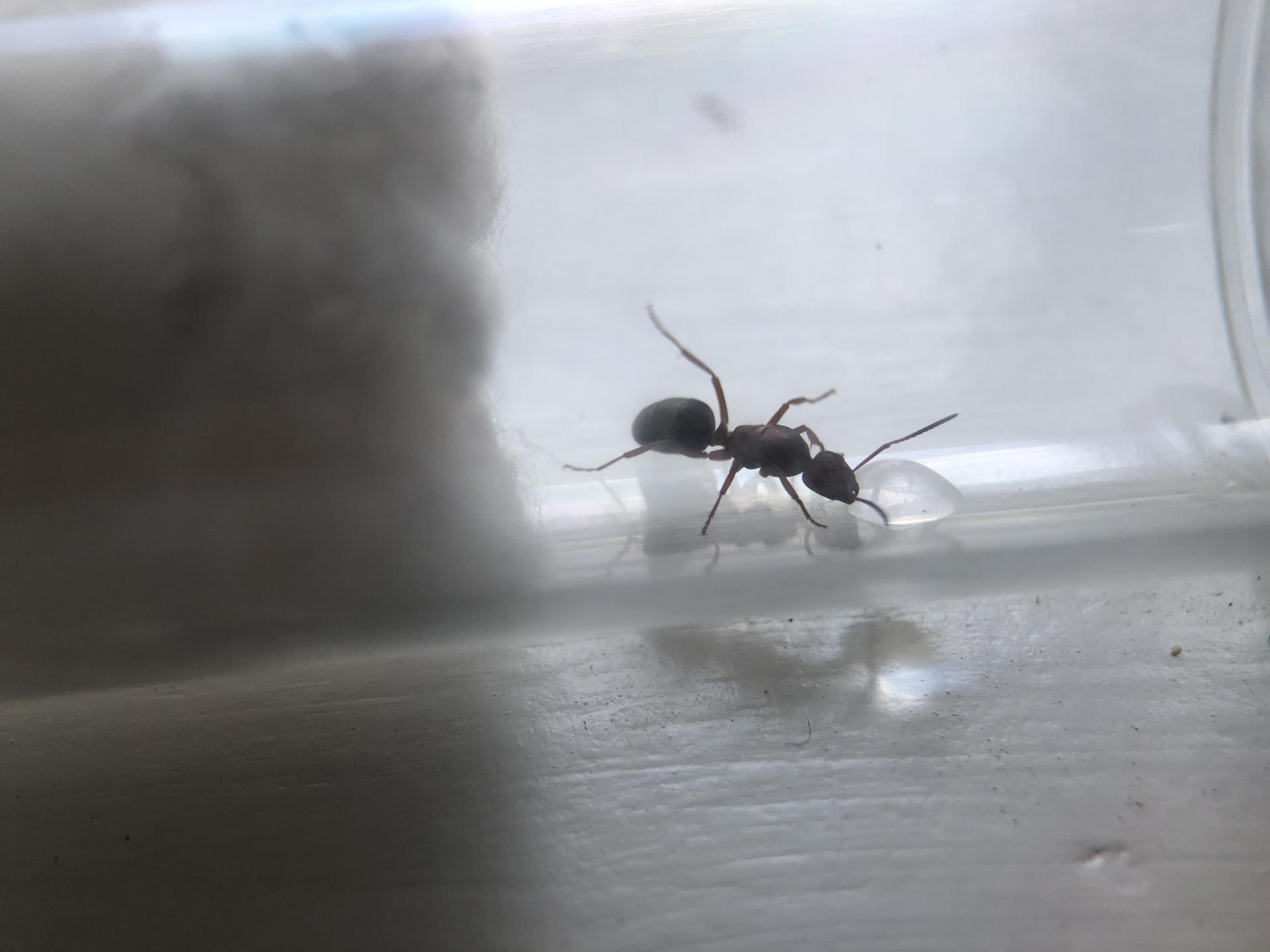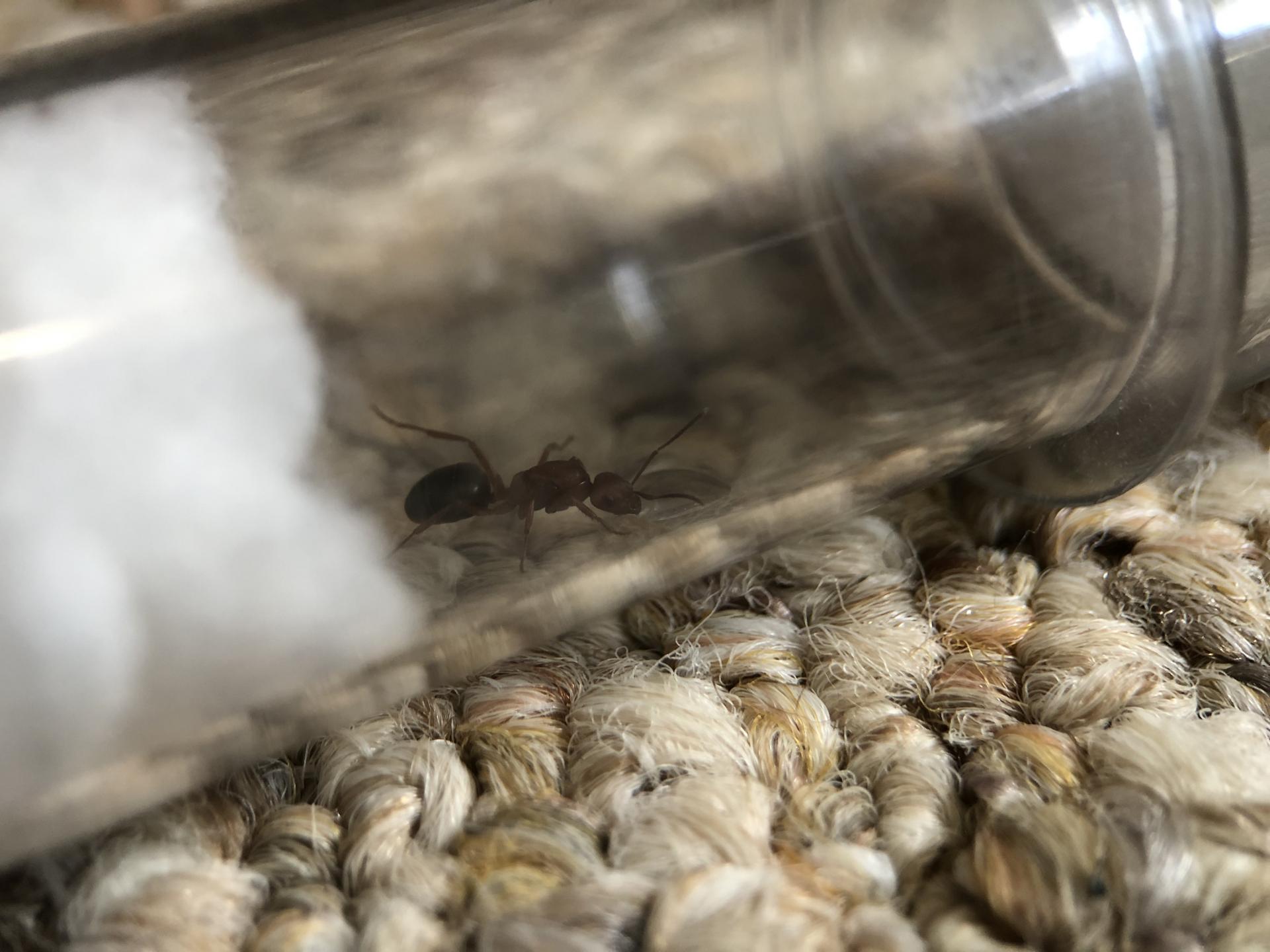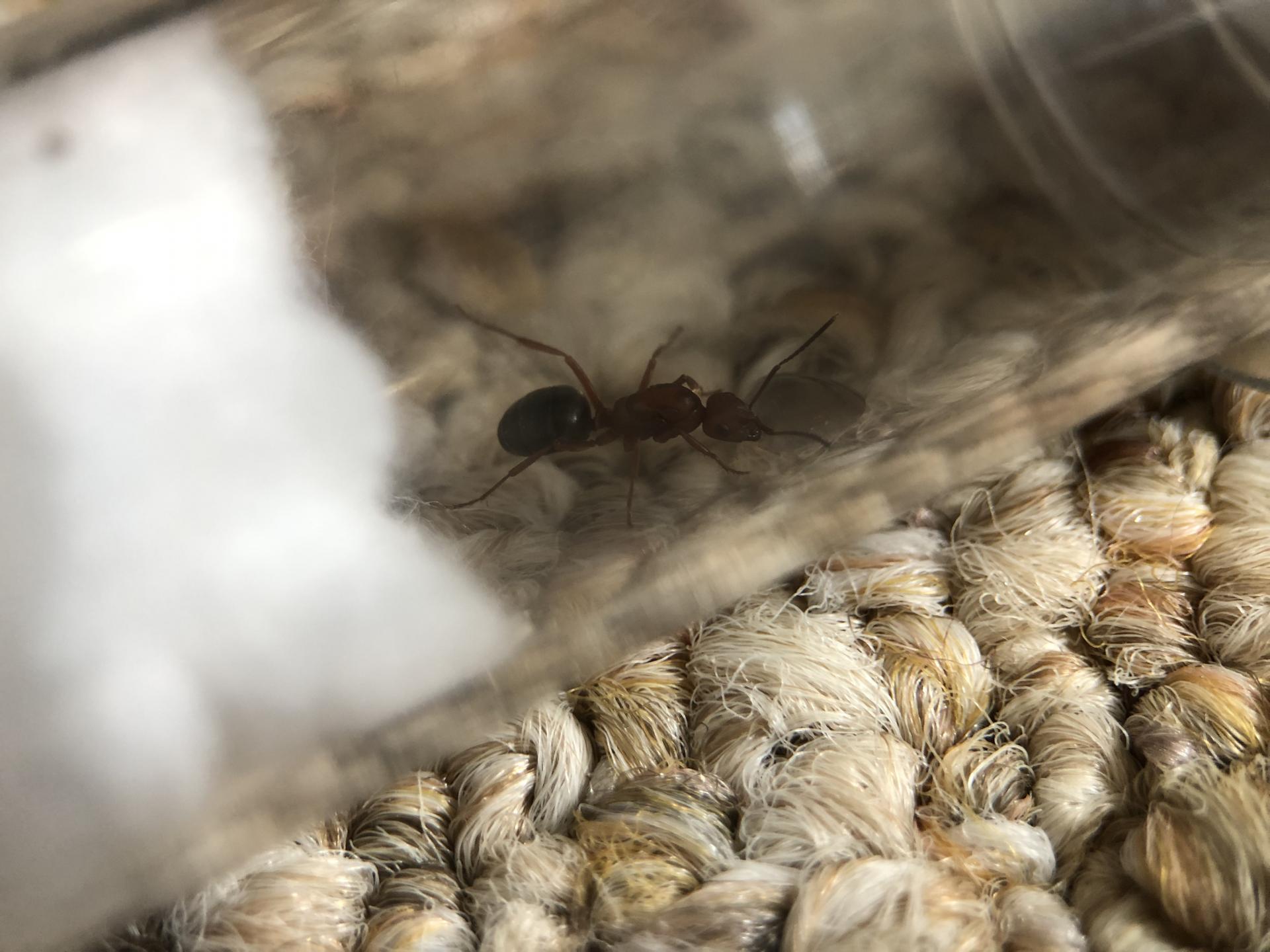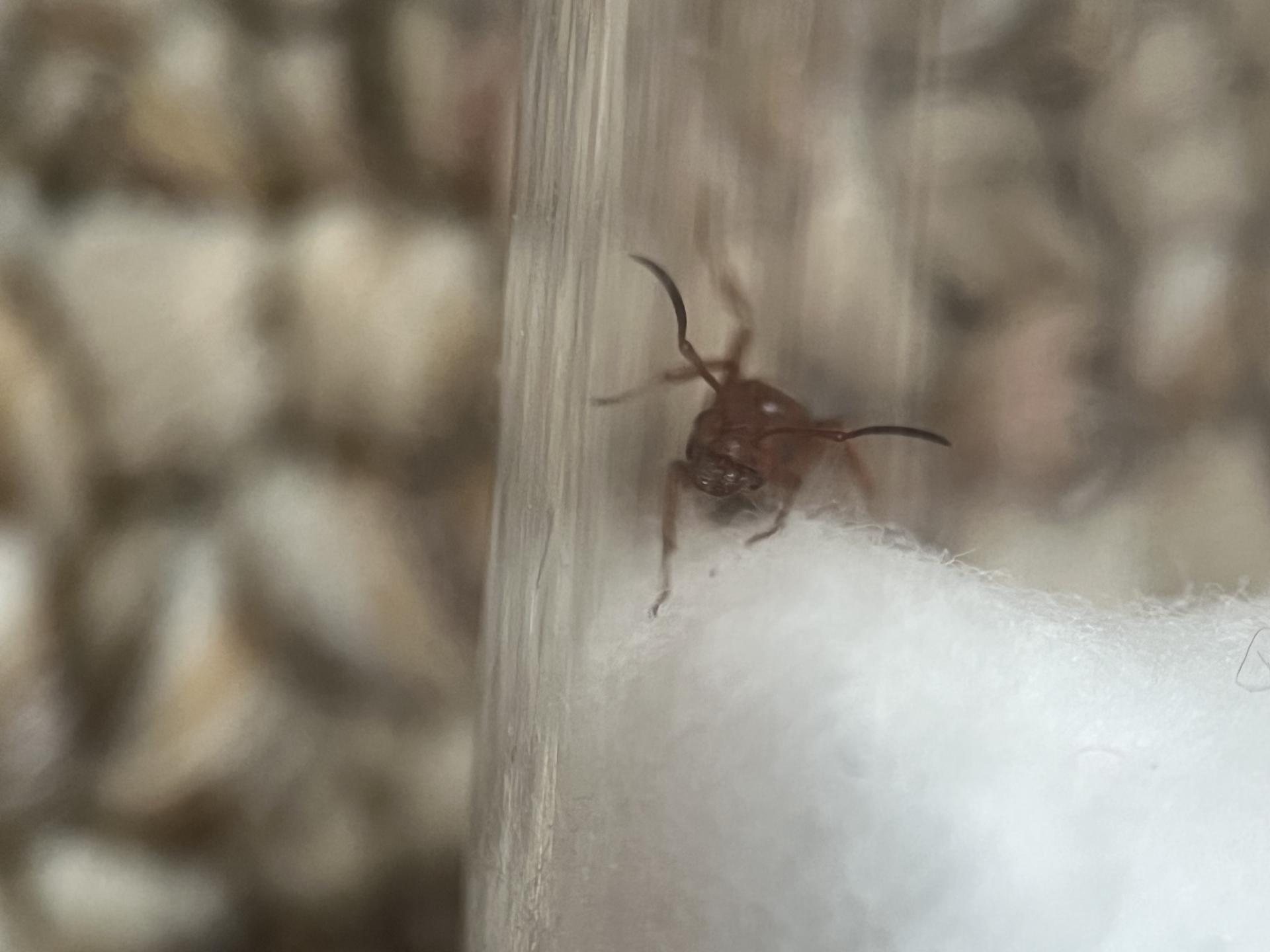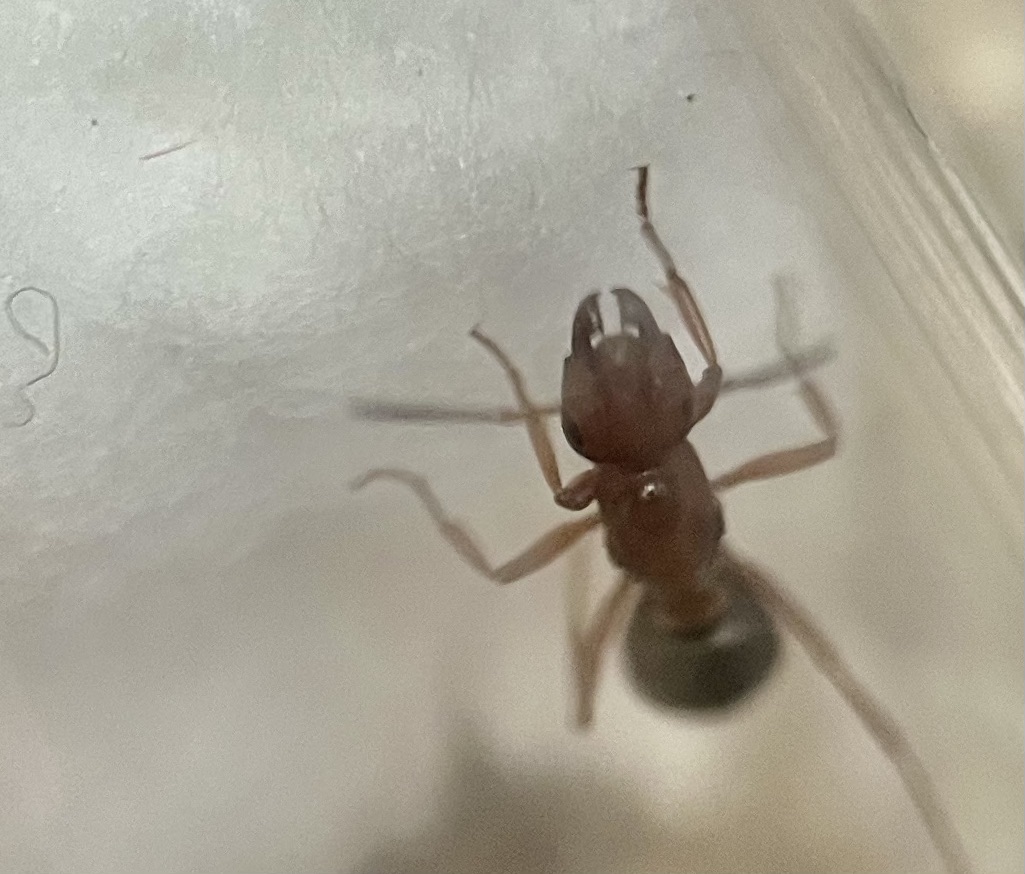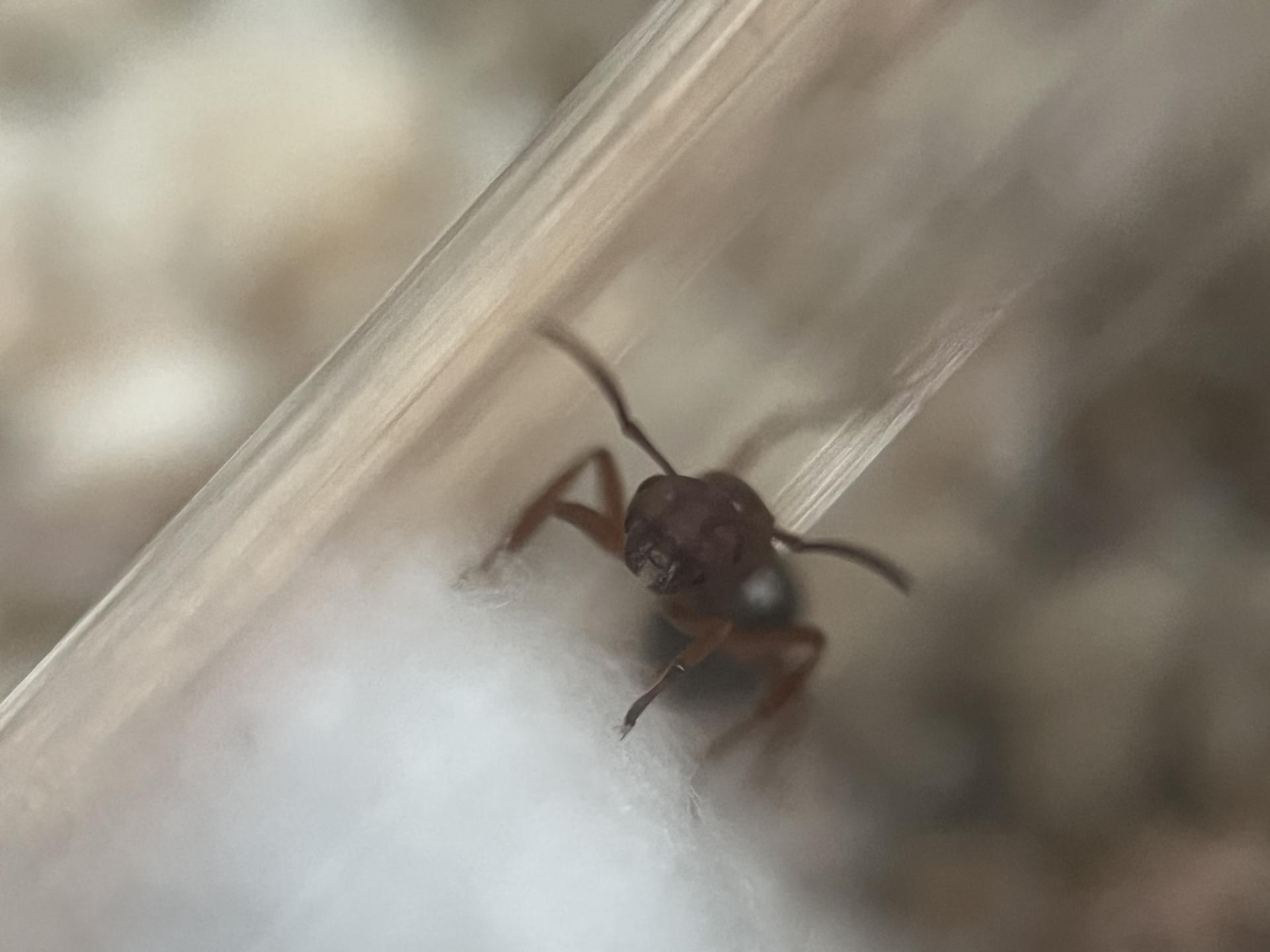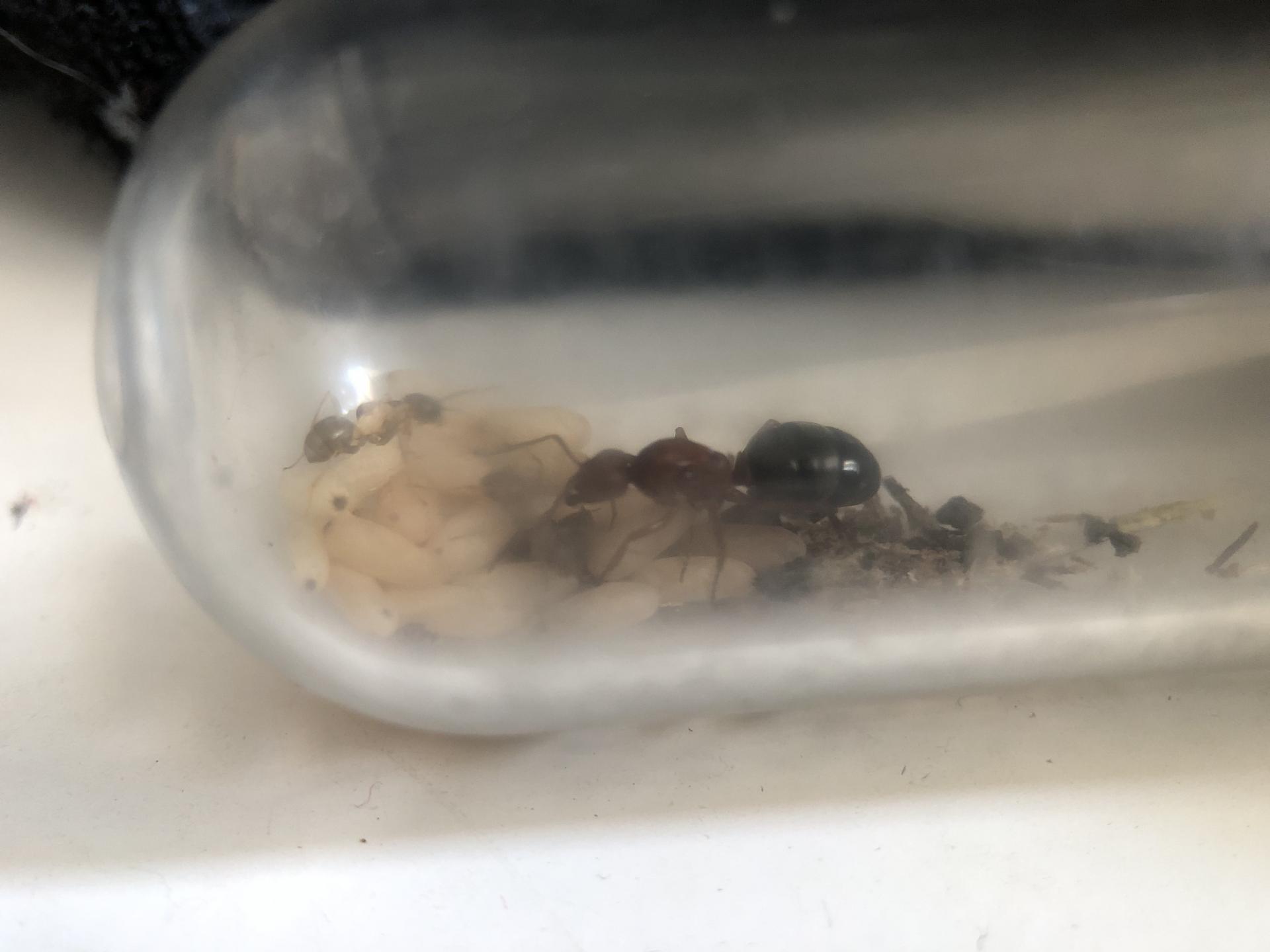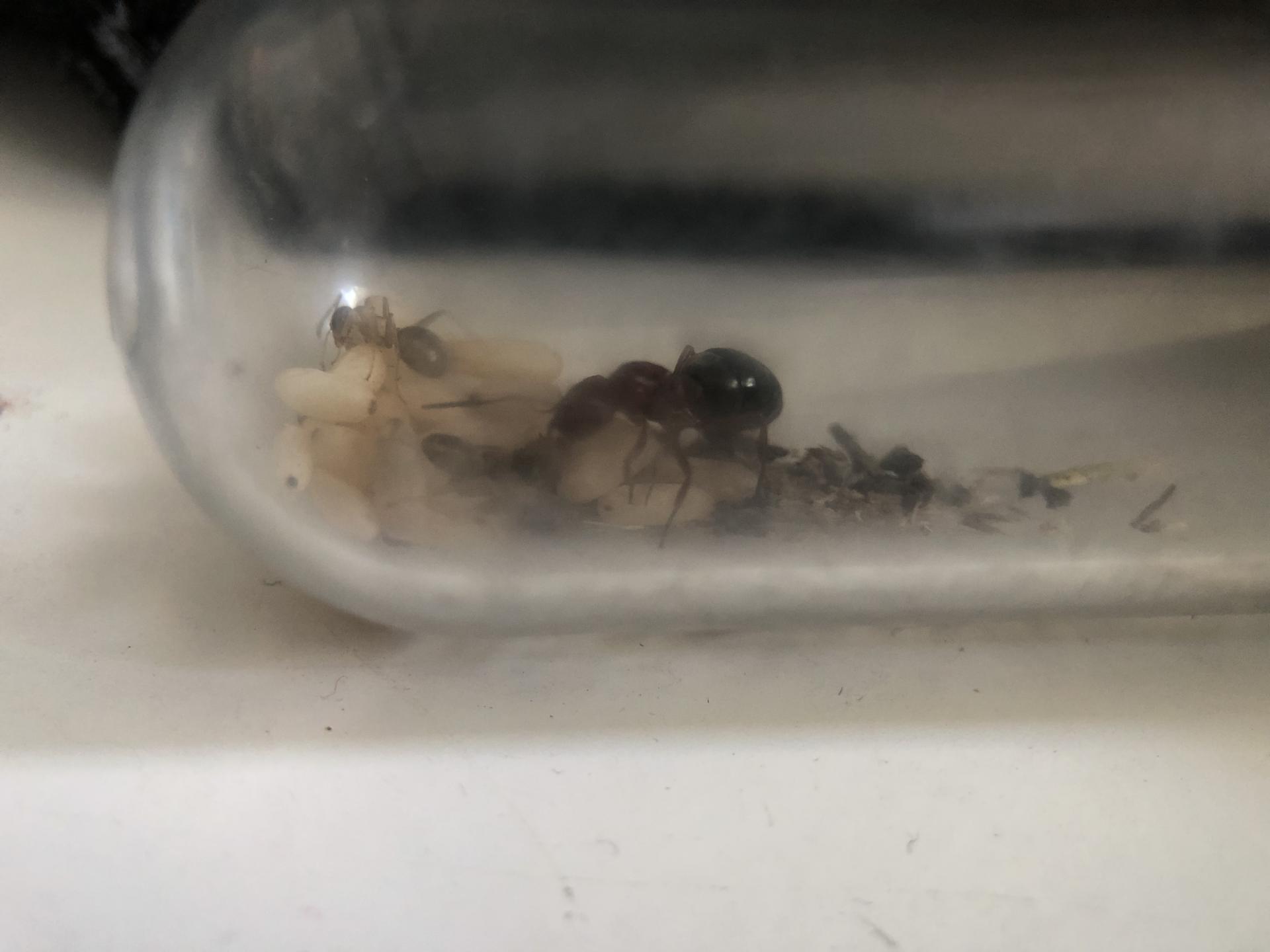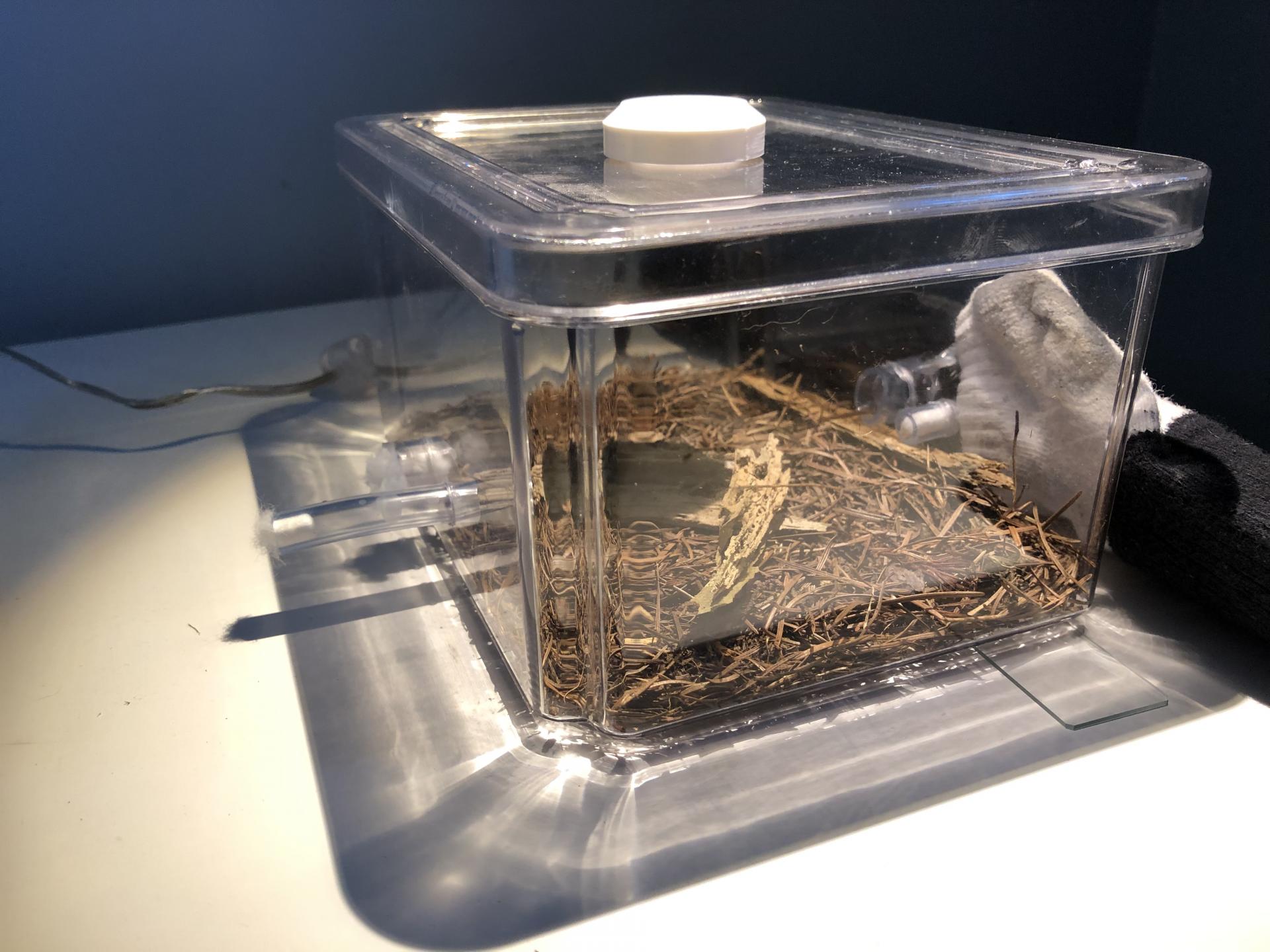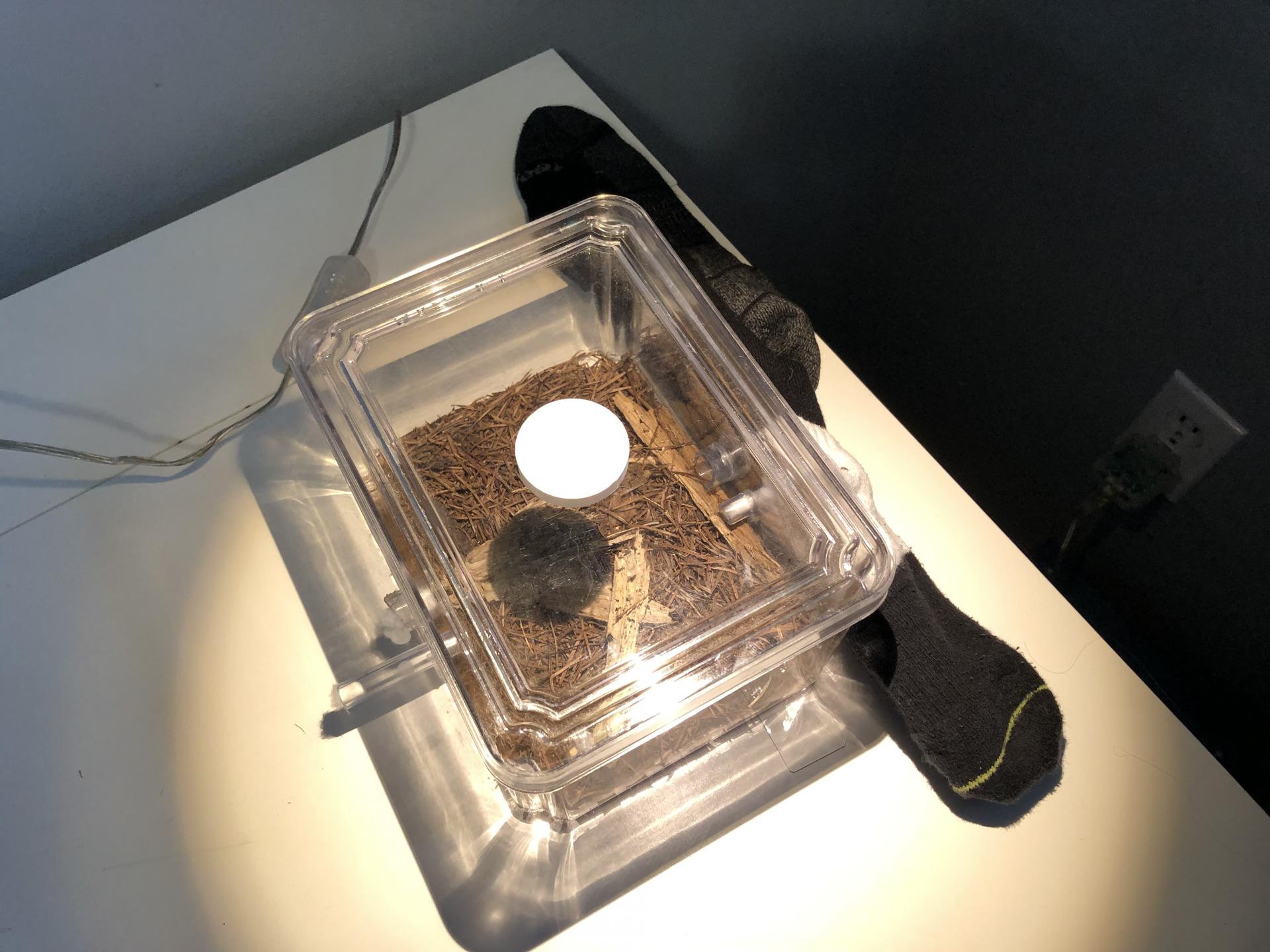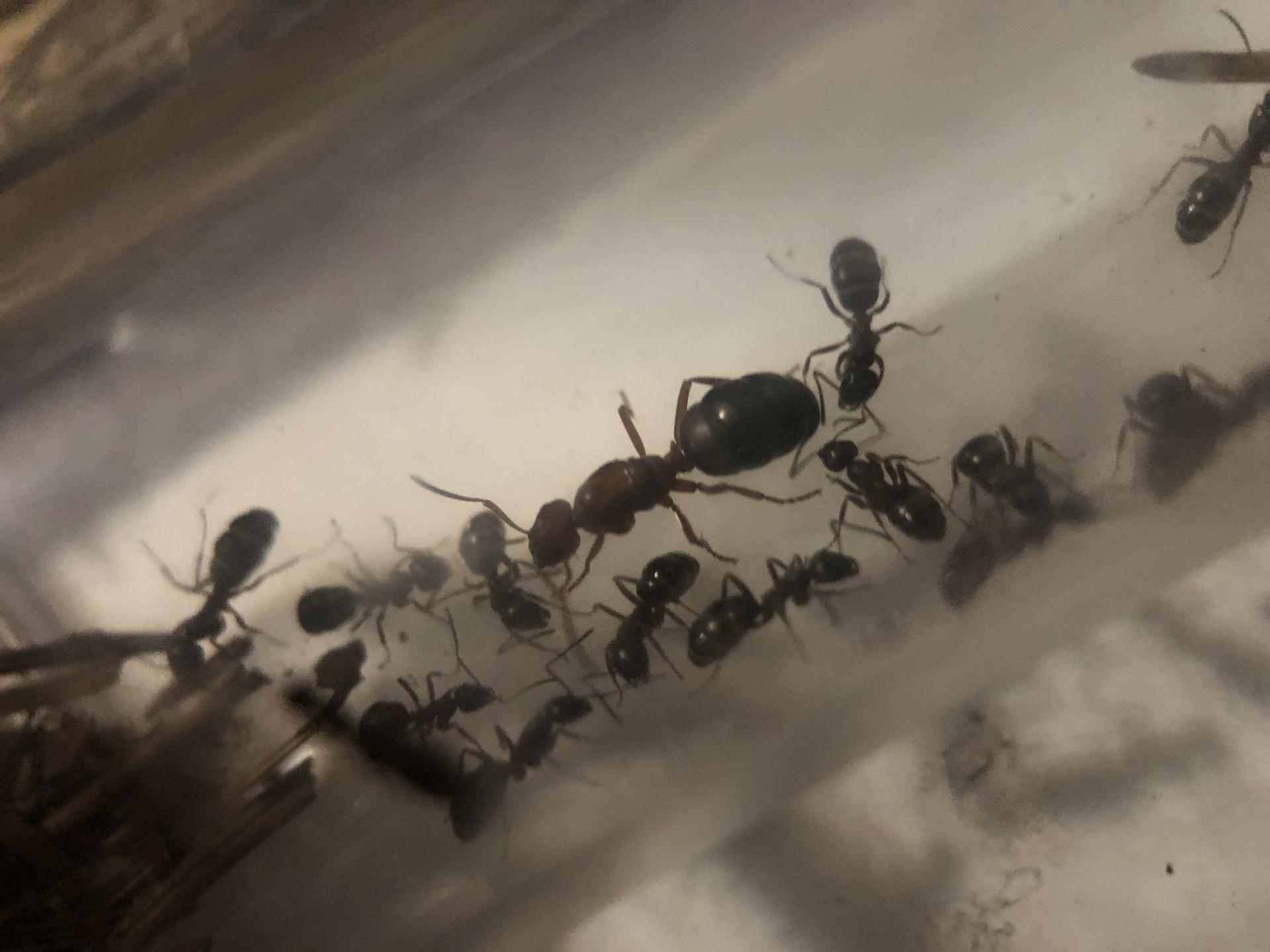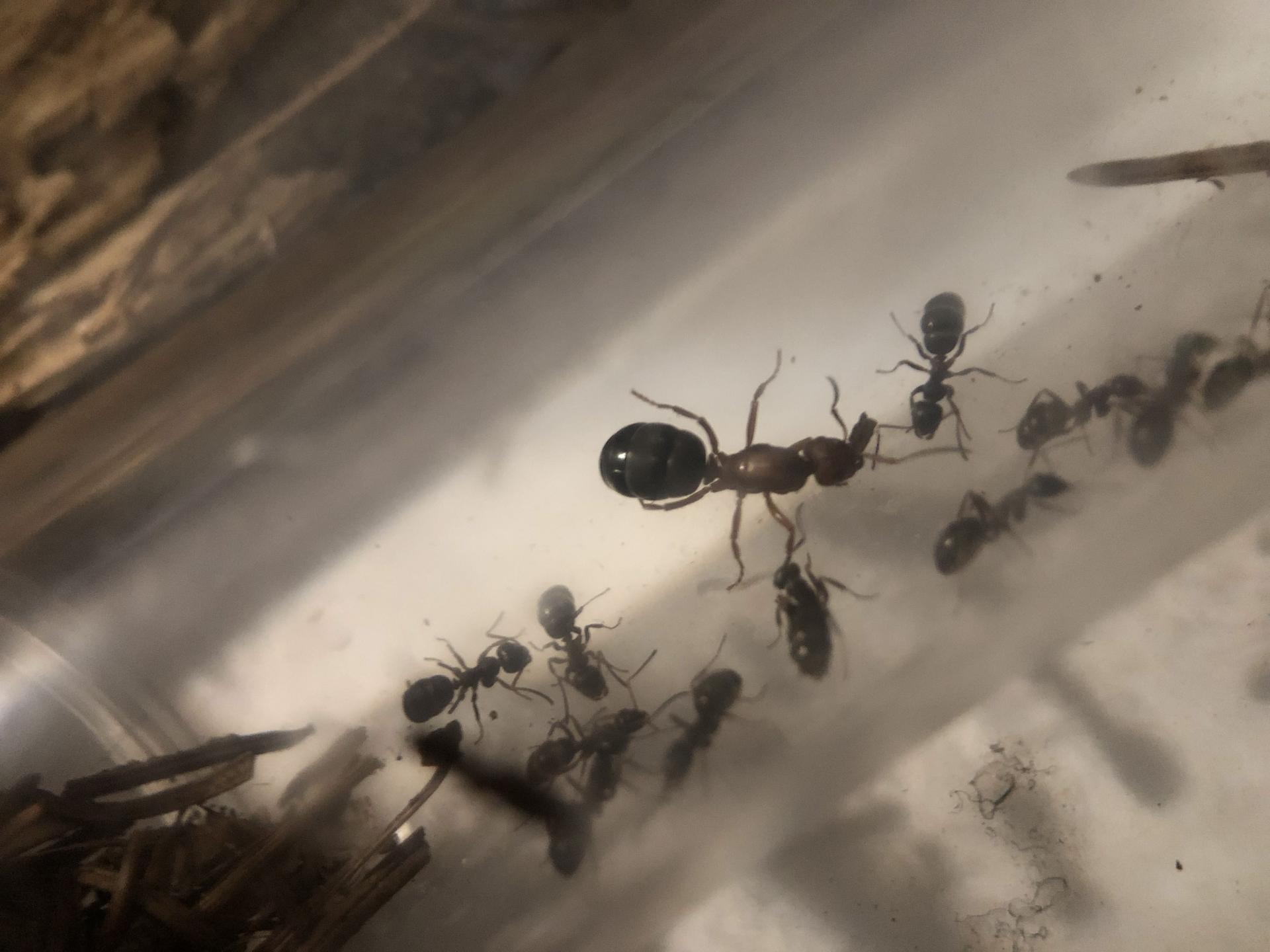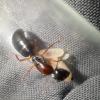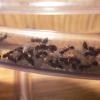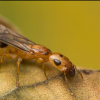I've decided to just go ahead and turn this thread into a journal. So, here's an update!
About half of the pupae have opened, giving me about 10 to 15 workers so far. They have also become much braver, and instead of simply sticking by the queen, more are venturing out towards the other test tube and one into the outworld. Clearly, they've also been pulling pine needles into the nest, as most ant species do if given the right materials. I've fed them sugar water only so far, and so I will now begin feeding them some proper meats.
The aserva queen is looking good! But no eggs so far. I'm not too worried, as I've heard this species likes to overwinter before laying eggs, which makes sense.
I am a bit worried, however, about their nesting choices. I have two test-tubes hooked up end-to-end, connected with a makeshift T-connector attached to the outworld. No ants have yet ventured into the wet test-tube, where most of the moisture is. I suspect that enough moisture is flowing into the dry test-tube to be adequate, but I'm not certain. If anyone else has an idea, please let me know!
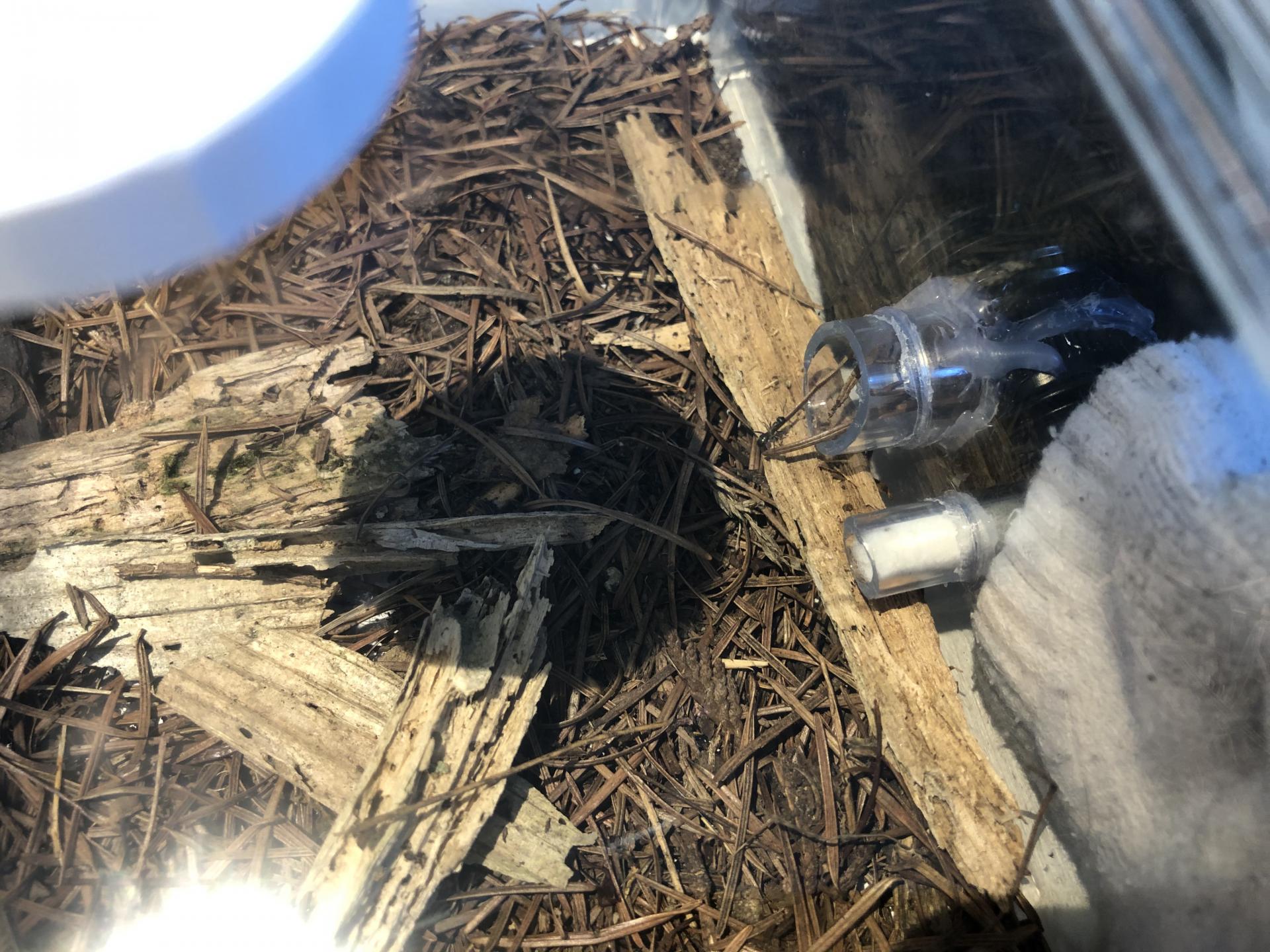
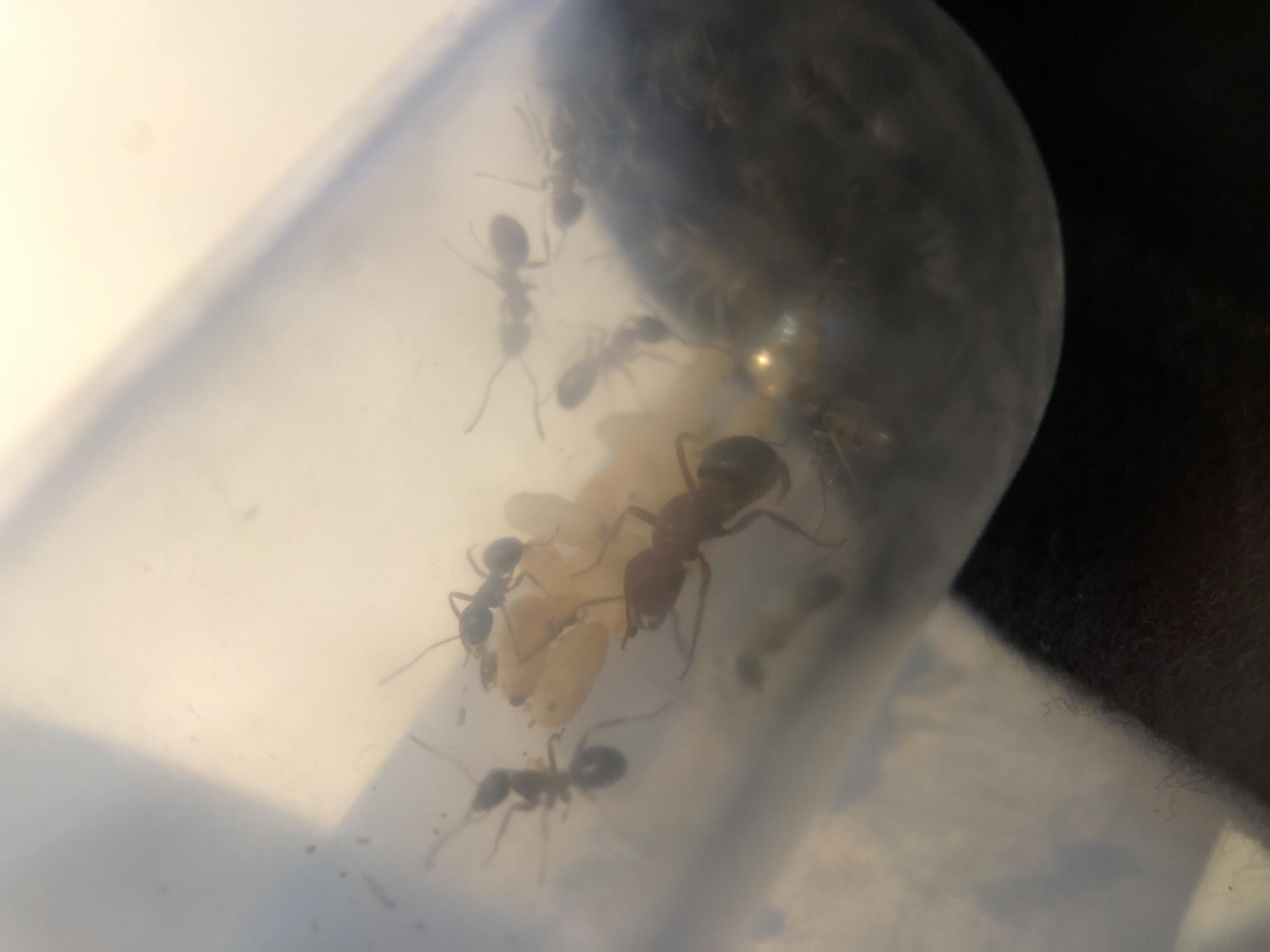
Manica invidia (1 queen, ~200 workers)
Manica invidia (1 colonies, 1 queens plus 3 workers)
Lasius niger (single queen, ~200 workers - naturalistic, predatory set-up)
Lasius americanus (1 colony, ~10 workers)
Tetramorium immigrans (3 colonies, 3 queens, ~ five workers each | 1 colony, 1 queen, ~1200 workers)
Formica aserva (aserva queen, ~15 Formica neorufibarbis workers)
"And God made...everything that creeps on the ground according to its kind.
And God saw that it was good." - Genesis 1:25

